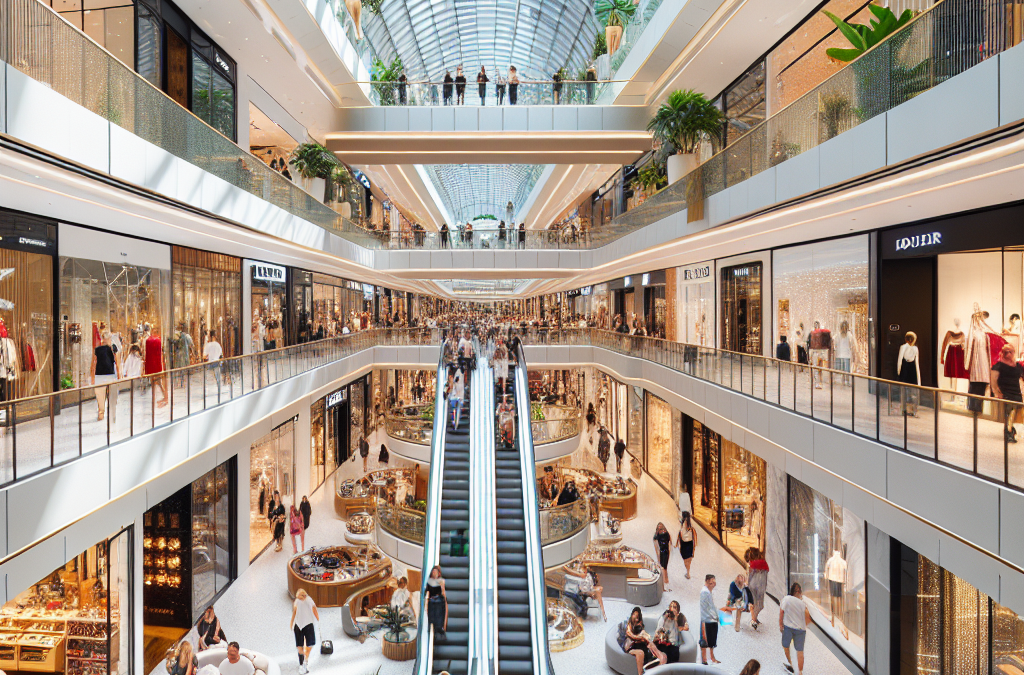In the heart of Brisbane, the retail landscape is undergoing a remarkable transformation. Shopping centers, once simple places for buying goods, have evolved into multifaceted destinations that offer more than just shopping. This evolution is not only reshaping the way people shop but also redefining the very essence of the shopping experience.
Historical Perspective
To understand the current state of shopping centers in Brisbane, it’s essential to delve into their history. Brisbane’s shopping centers have come a long way from their modest beginnings. From small marketplaces to grand malls, the journey has been marked by innovation and expansion.
Current Trends in Shopping Centers
Today, shopping centers are all about offering experiences. The modern consumer seeks not just products but also entertainment and convenience. As a result, shopping centers have shifted their focus towards creating vibrant spaces. They incorporate open-air designs, lush greenery, and art installations to enhance the ambiance. Shoppers can now enjoy a leisurely stroll or have a picnic within these retail hubs.
Technology has also become integral. Smart parking systems, digital signage, and mobile apps that guide shoppers through the mall are commonplace. Augmented reality experiences are on the rise, allowing visitors to virtually try on clothing or explore products before purchasing.
Sustainability is another prominent trend. Shopping mall Brisbane are increasingly adopting eco-friendly practices. Solar panels, rainwater harvesting, and waste recycling initiatives are reducing their environmental footprint.
Impact of E-commerce
The advent of e-commerce has presented a challenge to traditional retail, but shopping centers are adapting. They are focusing on the advantages of physical shopping, such as trying products before purchase and the immediacy of taking goods home. Many malls have integrated online and offline shopping experiences, offering the convenience of both worlds.
The Role of Entertainment and Dining
Shopping centers are no longer just places to buy things; they are entertainment hubs. Entertainment complexes within malls offer cinemas, arcades, and even indoor theme parks. Dining options have also expanded to include a diverse array of cuisines, making shopping centers a gastronomic destination in their own right.
Community Engagement
Brisbane’s shopping centers understand the importance of community engagement. They host events, workshops, and cultural festivals, fostering a sense of belonging. These activities go beyond shopping and create memorable experiences for visitors.
Challenges and Opportunities
While shopping centers in Brisbane have embraced change, they face challenges like increased competition from online retailers and changing consumer preferences. However, opportunities for growth lie in innovative concepts like mixed-use developments and collaborations with local artisans.
Sustainability Initiatives
Sustainability is a growing concern among shoppers. Shopping centers in Brisbane are responding by adopting sustainable building practices, energy-efficient lighting, and promoting eco-friendly brands. Consumers are increasingly choosing shopping centers that align with their values.
Local vs. Global Brands
The mix of local and global brands in Brisbane’s shopping centers strikes a balance between supporting local businesses and offering international choices. This diversity adds to the richness of the shopping experience, giving consumers a variety of options.
Conclusion
In conclusion, the retail landscape in Brisbane has transformed shopping centers into dynamic, multifunctional spaces. They are no longer just places to shop; they are places to connect, dine, be entertained, and embrace sustainability. As the retail industry continues to evolve, Brisbane’s shopping centers will remain at the forefront, adapting to the changing needs and desires of consumers.


Recent Comments